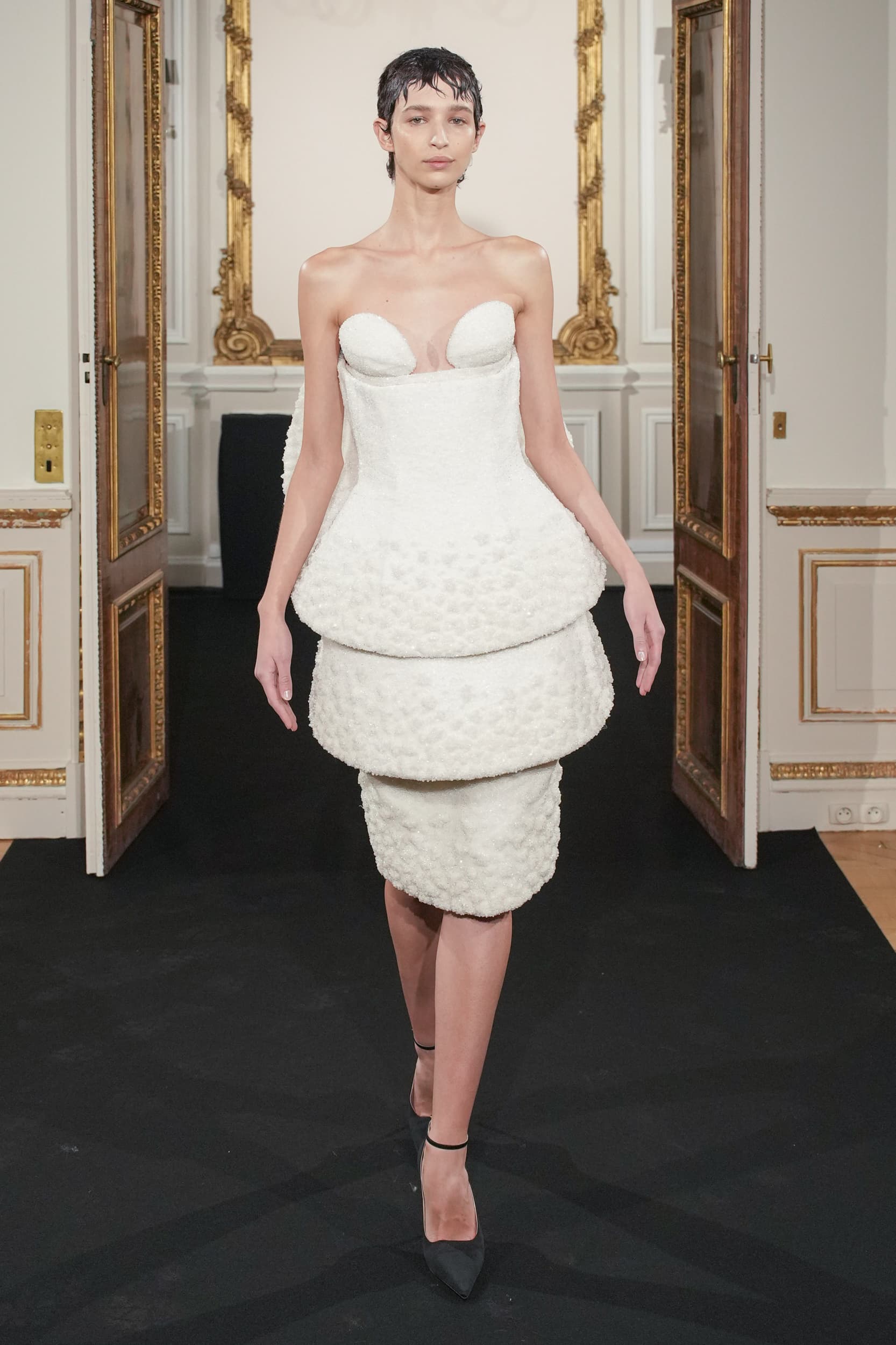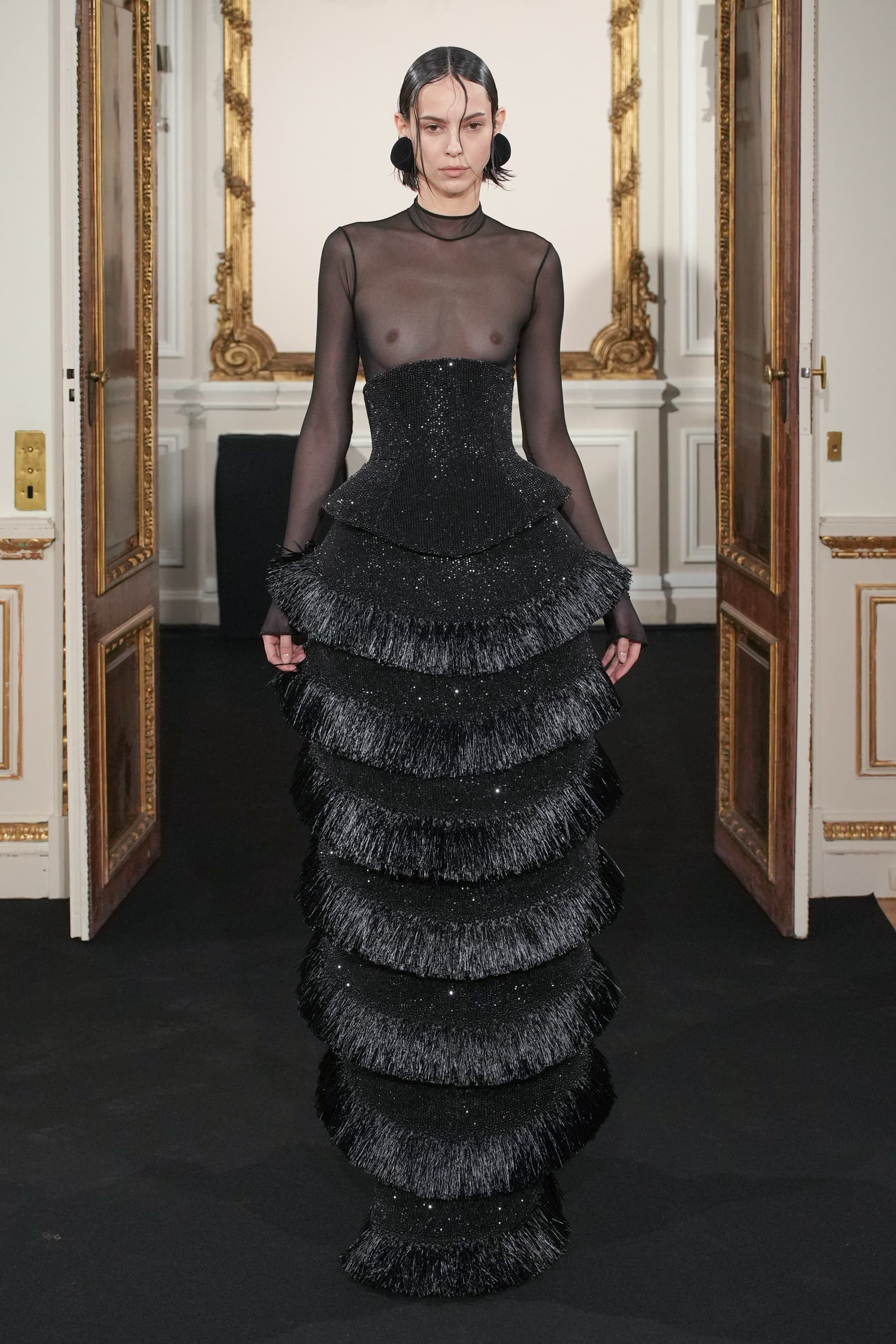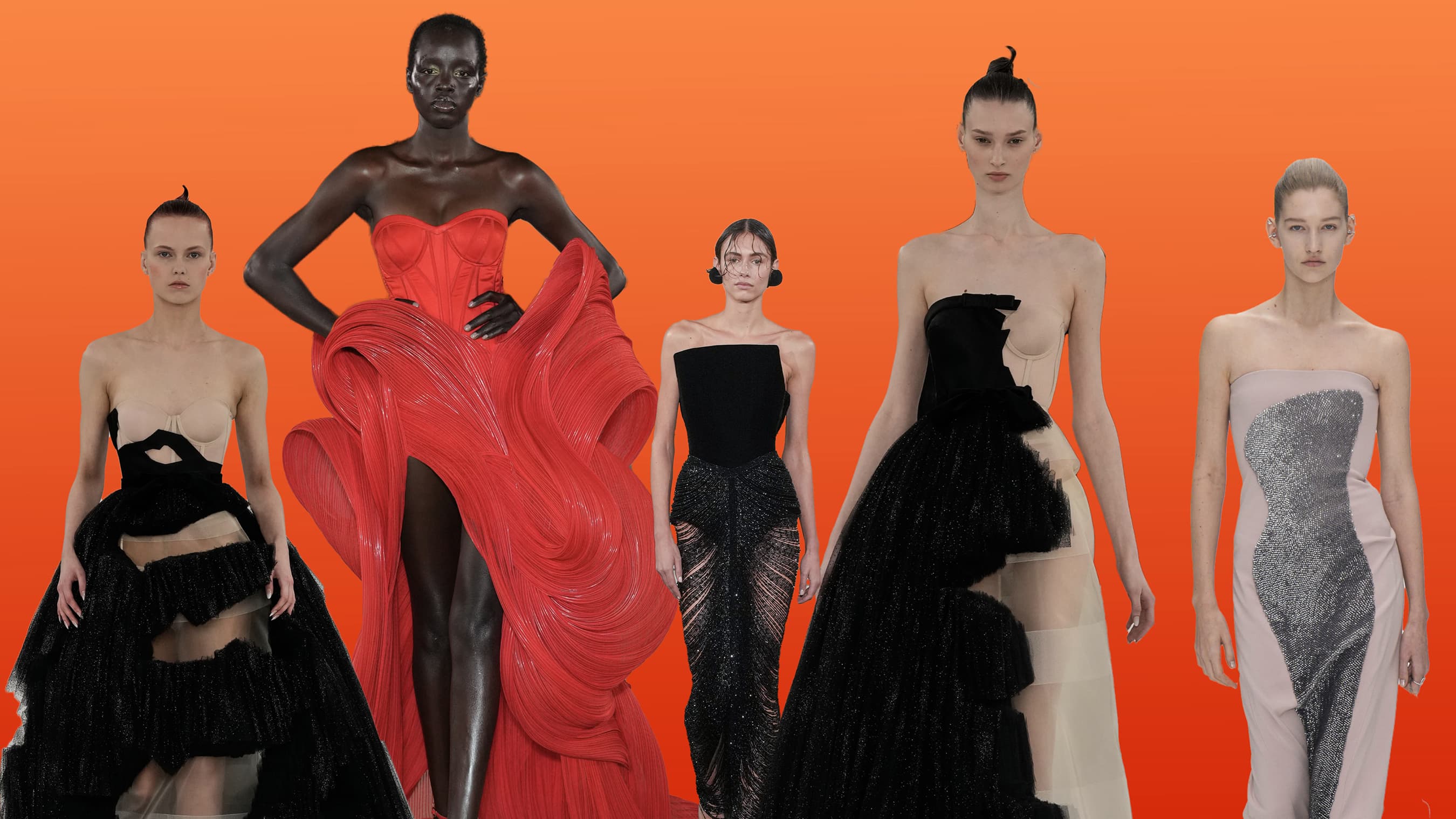Haute Couture S/S 24 became a spellbinding display of new volumes and architectural proportions that redefined the focus on the waist – the most pivotal point of the female anatomy, while highlighting the extraordinary craftsmanship of the designers and their Ateliers. The corset is that form-defining piece, carving a new chapter in fashion, a move that shatters the gender divide and harks back to the curvaceous 19th century when the garment represented a change from people wearing clothes to fit their bodies to changing the shape of their bodies. They were used to “beautify” women and also to ensure modesty. Corsets were laced tightly with as many as fifty laces and had to be worn from childhood until the wedding night!
In his latest collection for Maison Margiela, Galliano’s collection brimmed with audacious corsetry, intricate lace, and hip pads, all converging to craft silhouettes as provocative as they were ethereal. Galliano channels Brassaï’s gritty Brassai’s 1920s and ’30s depictions of Paris’s underworld Parisian scenes, intersecting them with Mr. Pearl’s renowned corset craftsmanship — the man in question, Mr. Pearl is also known for his commitment to corsetry, wearing a corset 24/7 to maintain an 18-inch waist and crafting his extravagant and opulent creations as a form of self-discipline and expression of elegance. Beyond this spectacle, the shift signals a broader embrace of structured, figure-defining styles poised to spill over from exclusive runways to street-smart wardrobes.


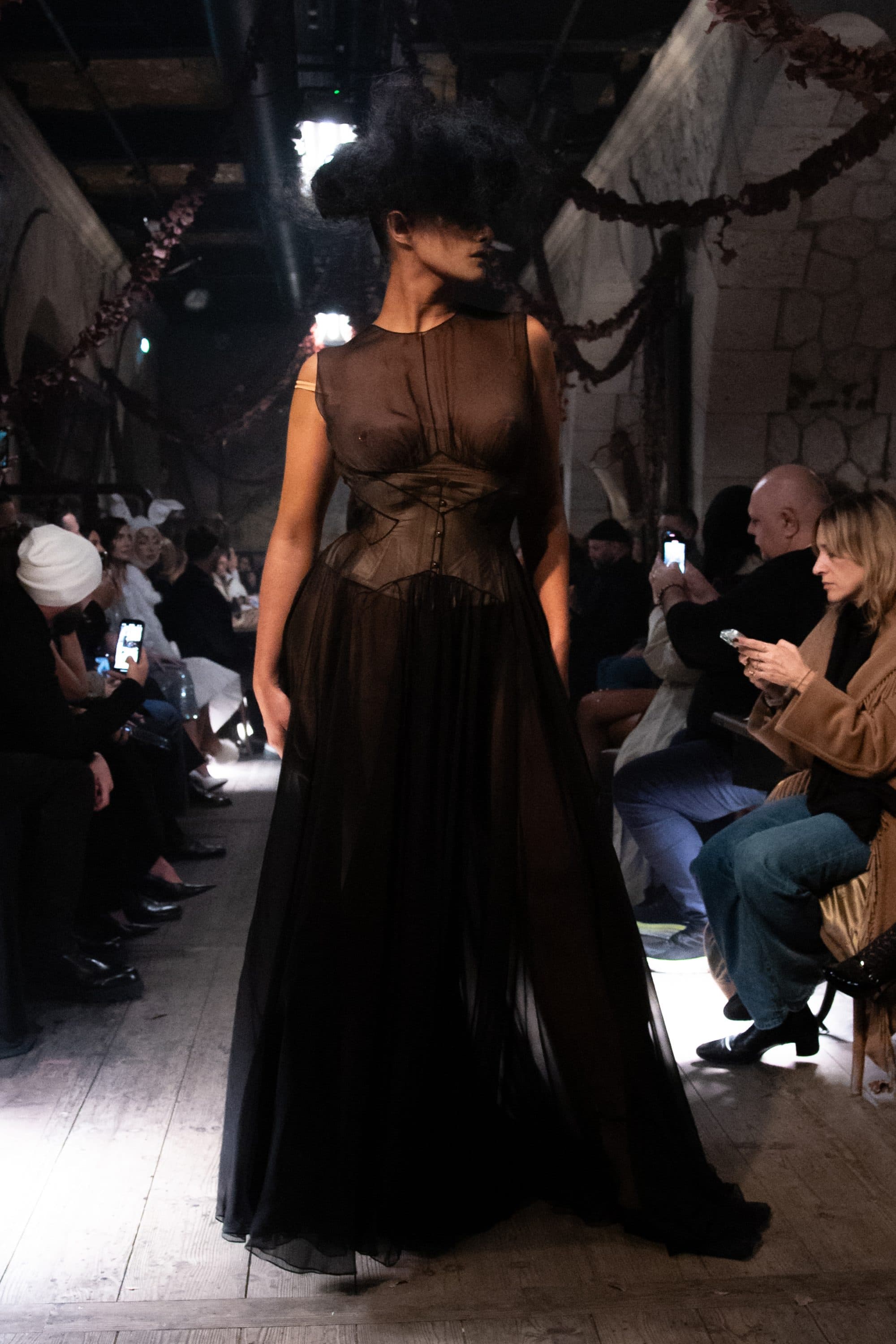



But these reimagined contours continued beyond Maison Margiela. Dior‘s legacy of shaping the modern silhouette emerged in Dior’s Haute Couture Spring/Summer 2024 collection; Maria Grazia Chiuri returned to the original iconic house codes with fitted “Bar” jackets and dresses featuring structured shoulders and hourglass waistlines, echoing the silhouette-enhancing feminine theme by emphasizing the waist and reinventing for a contemporary context, using structured silhouettes to convey strength and elegance.




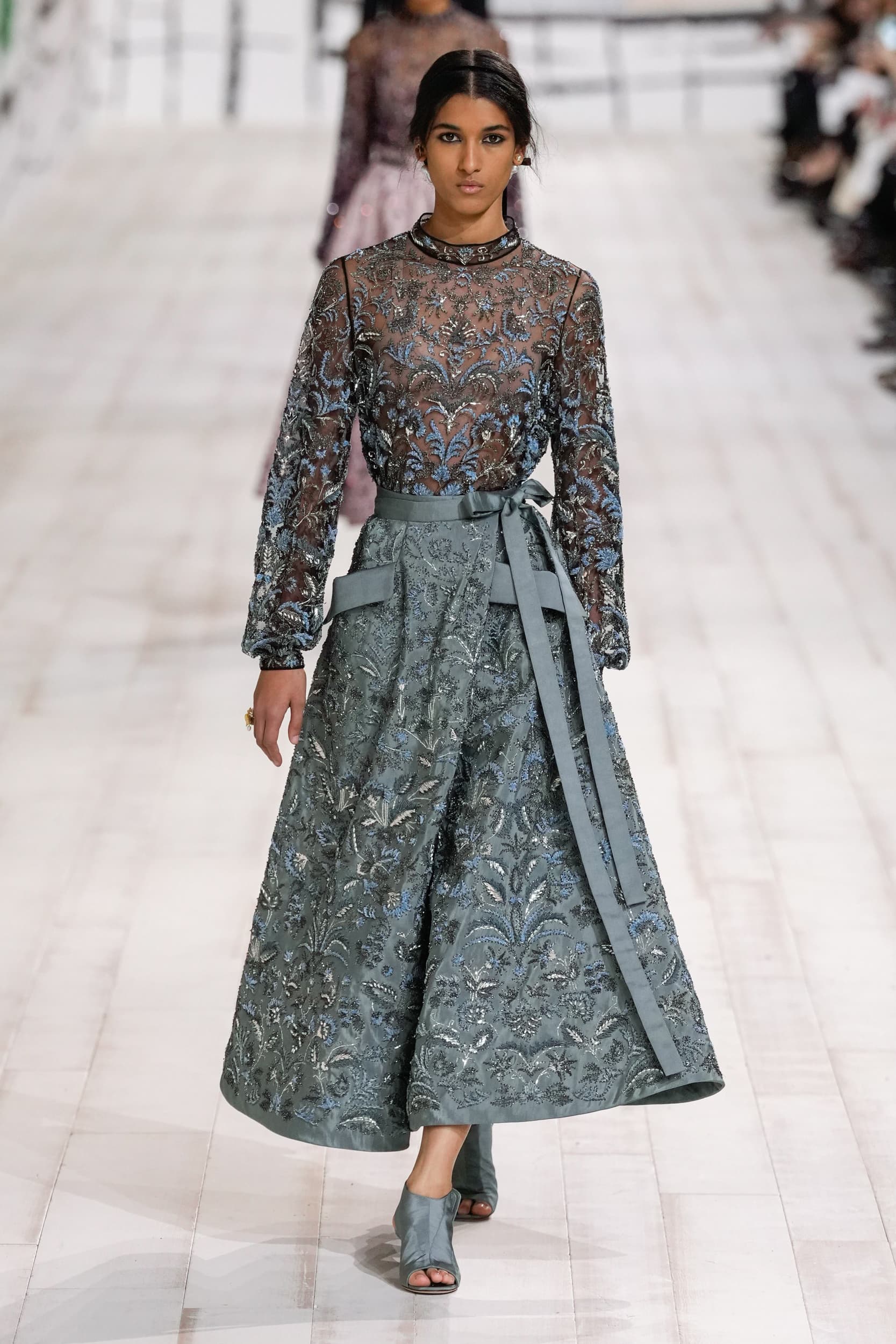


Building upon this narrative, Schiaparelli, under Daniel Roseberry’s creative direction, brings an audacious twist to the trend. Roseberry’s designs reinterpreted the female form, defining it with otherwordly shapes that plummeted in sculptural forms from above the decollete to the waist and spilled out into fabulous full volumes. The collection’s exaggerated shapes and bold embellishments offered a modern take on waist definition by merging futuristic fantasy with fashion and employing surrealistic elements to transform the female form into a living canvas. His use of exaggerated shapes and bold embellishments is a statement on the limitless possibilities of the human body as an art form.

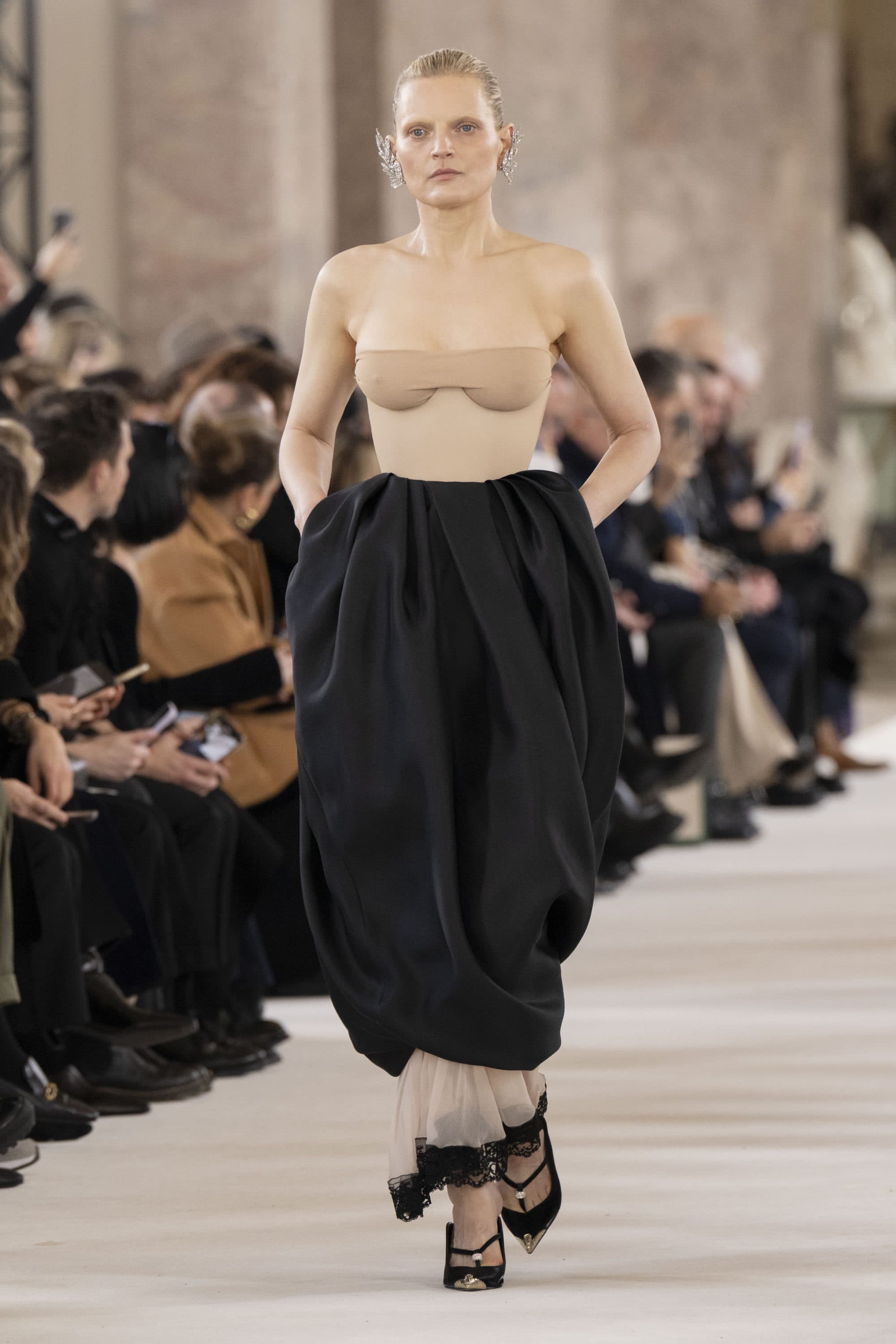
In contrast, Armani Privé’s interpretation is a subtle and sophisticated masterclass. The emphasis on the waist is more understated, using delicate draping and strategic tailoring to enhance the body’s natural lines. The collection reflects Armani’s commitment to timeless elegance, proving that the allure of the cinched waist can be both powerful and poised.
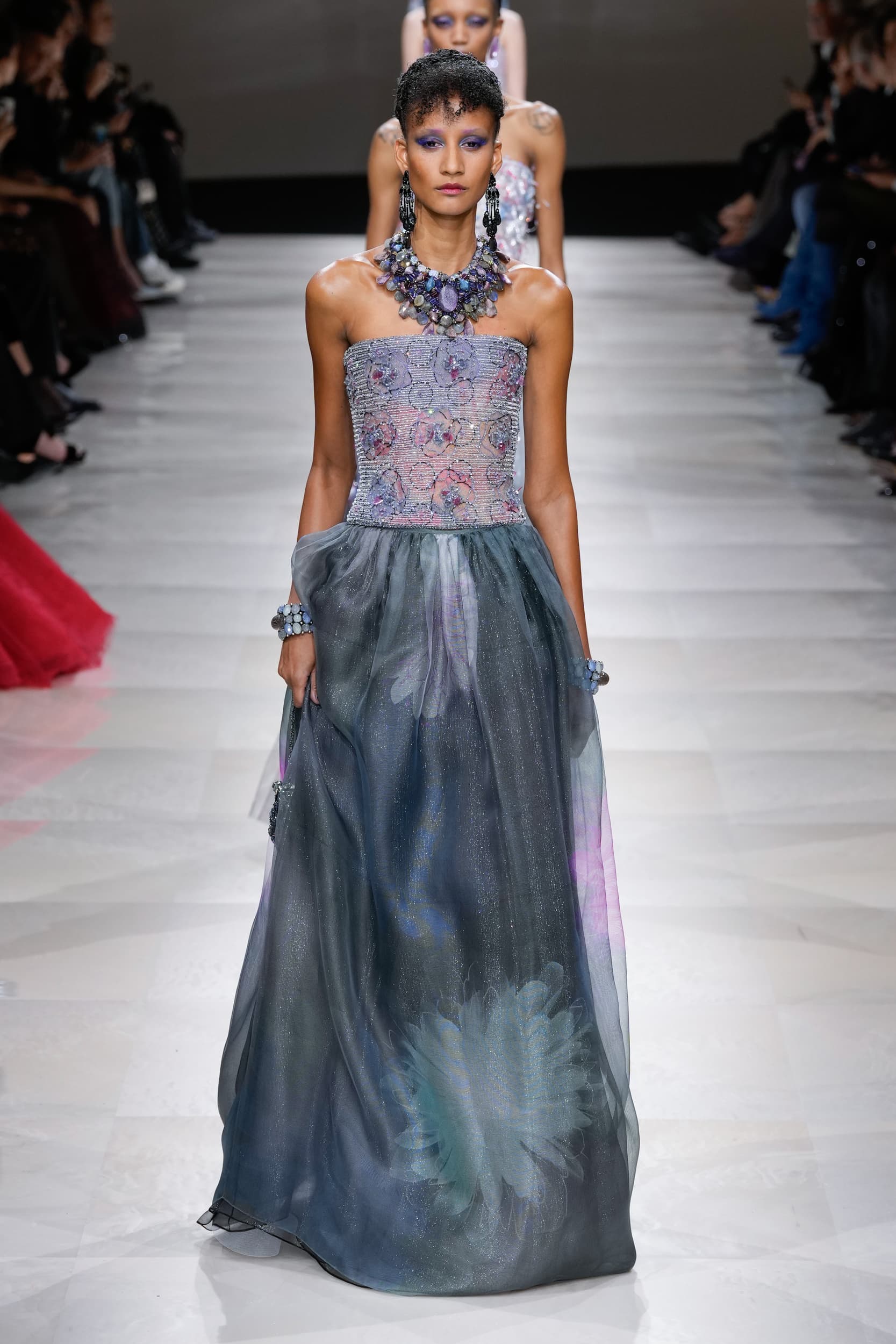
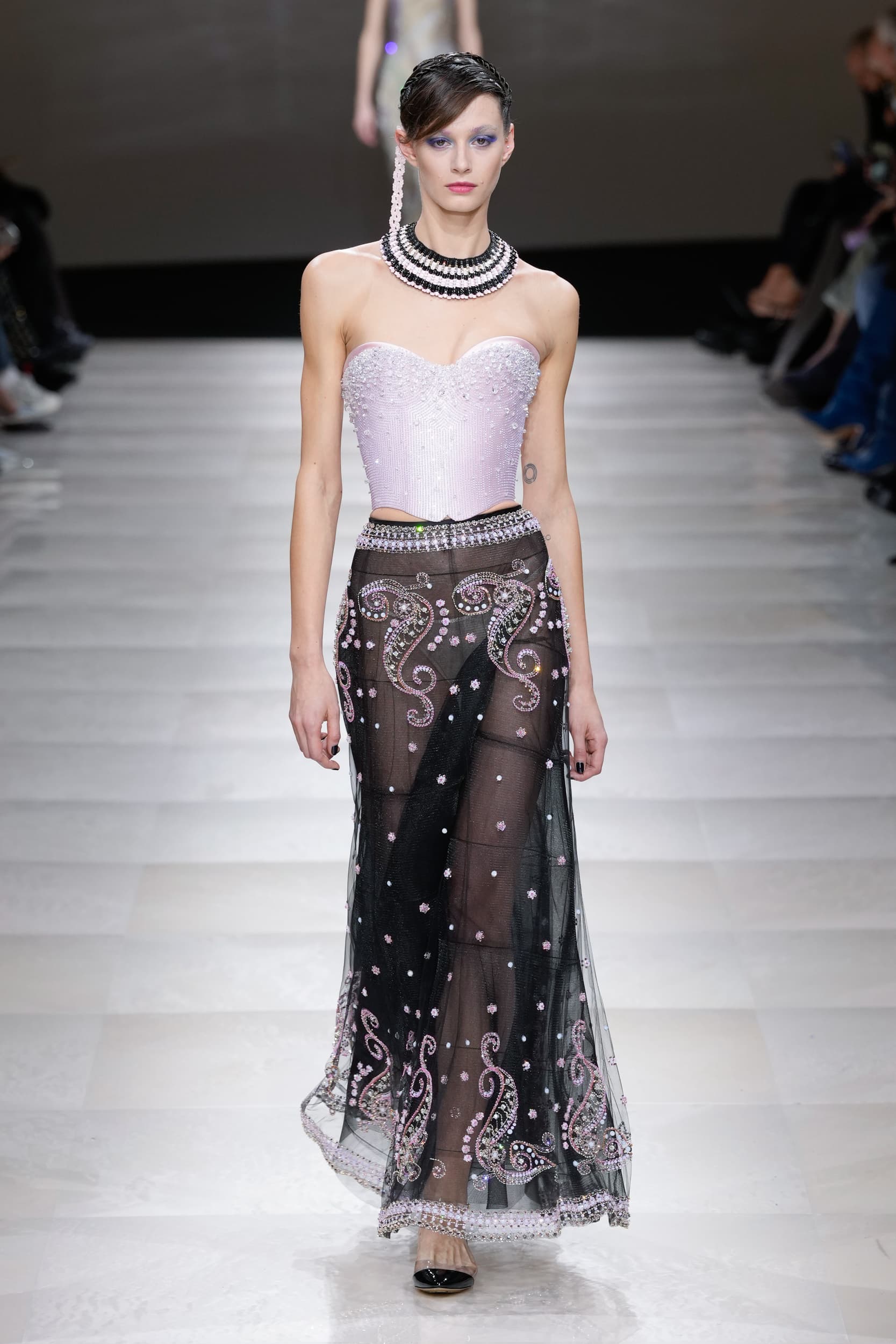
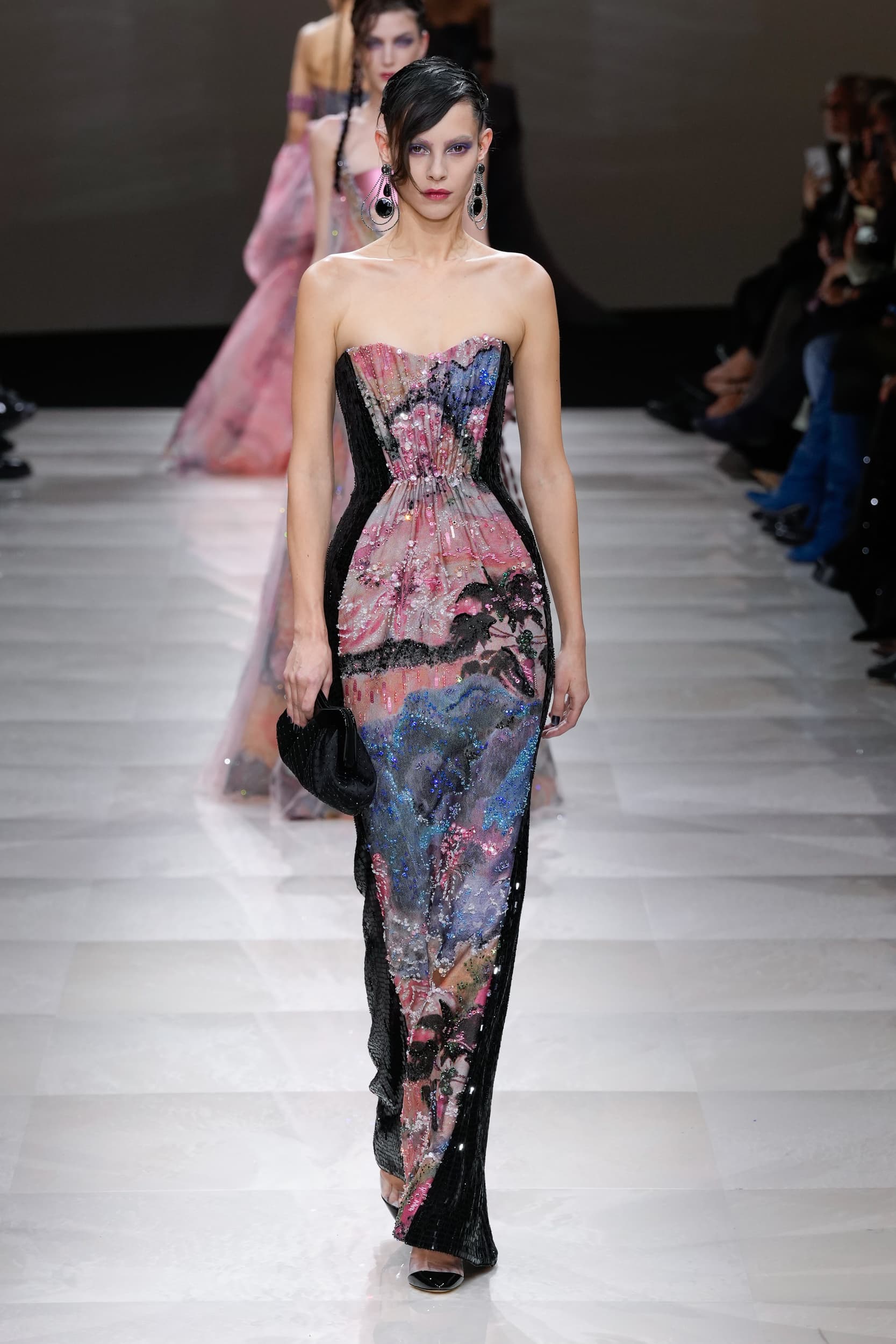
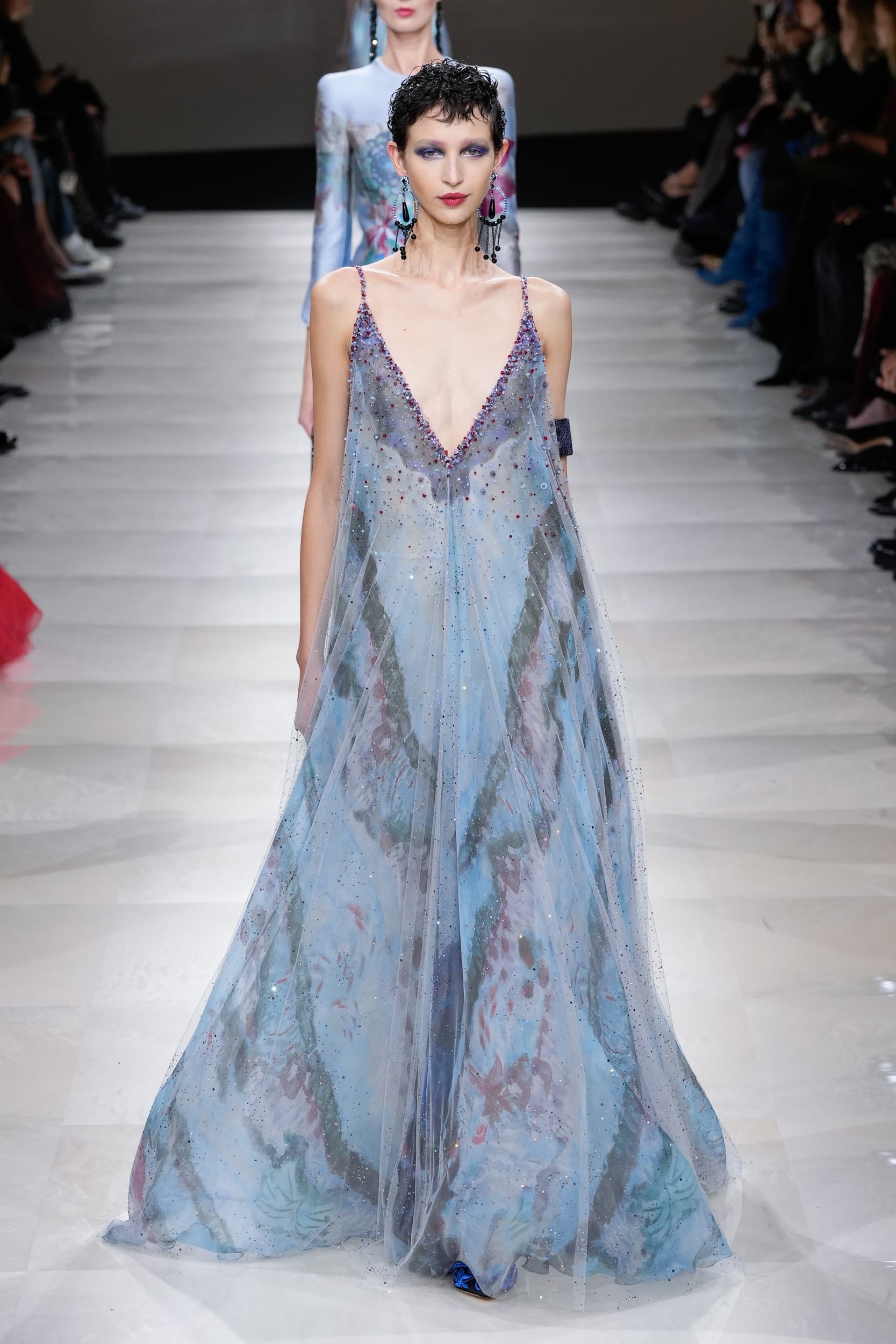
Simone Rocha’s ethereal presentation for Jean Paul Gaultier (ever the provocateur) infused her collection with sensual playfulness and innovation. Rocha took Gaultier’s designs to reconstruct traditional corsetry, reimagining it in ways that challenged and delighted, immersing herself in haute couture techniques, “subtly placed to not bare those parts of the female anatomy but leaving enough to entice the imagination”. Rocha’s corsetry was laced delicately to outline the femininity of form beneath materials that were lighter than air, caressing the body and offering intrigue and sensuality yet still evocatively defining the allure under voluminous shapes. Simone Rocha’s collaboration with Jean Paul Gaultier offers another rich avenue for exploration. Her unique approach to corsetry blends sensuality with a sense of ethereal lightness contrasted with Gaultier’s more provocative, playful style. Rocha’s designs maintain a delicate balance between revealing and concealing, thus adding a layer of intrigue and sensuality to the garments.

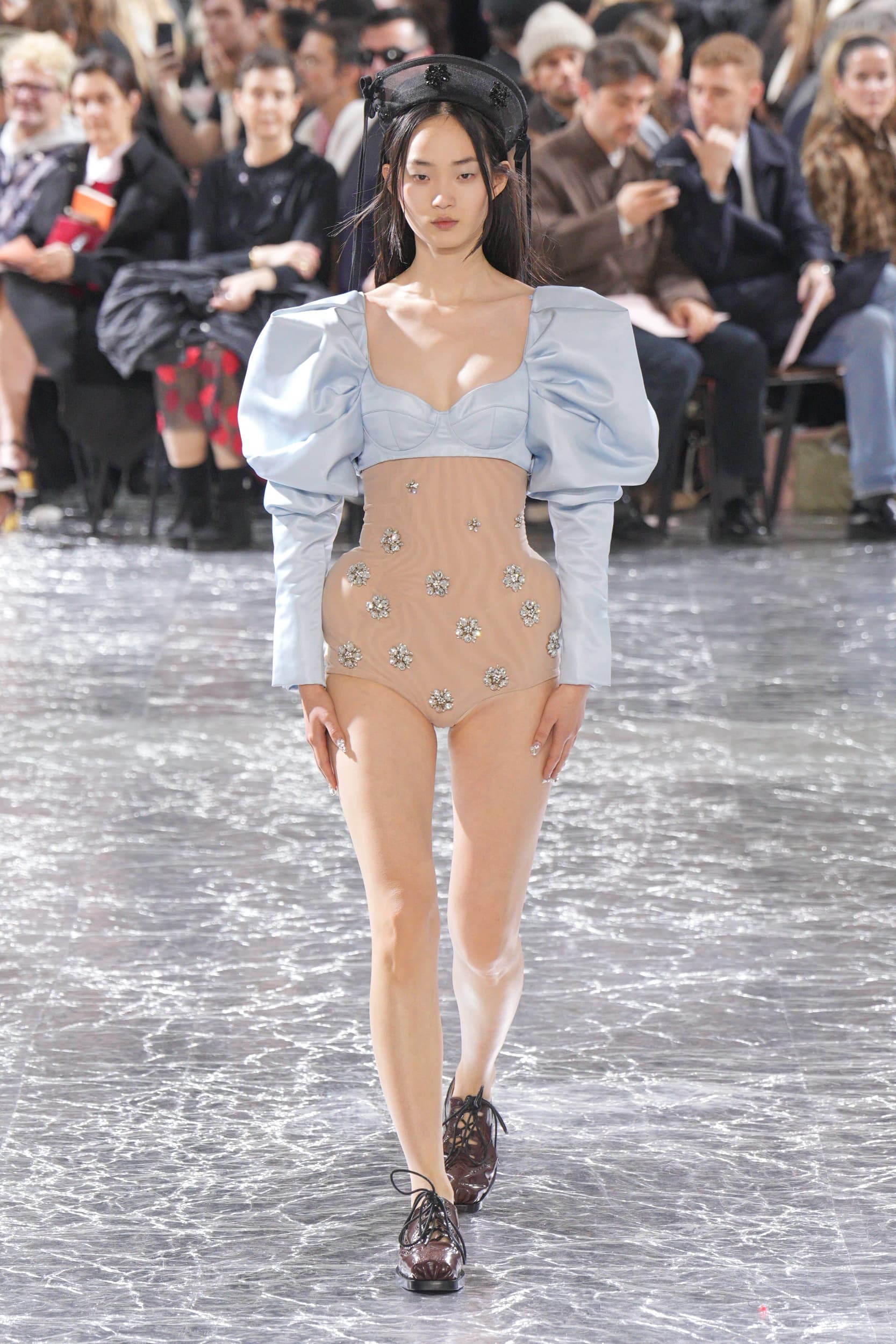







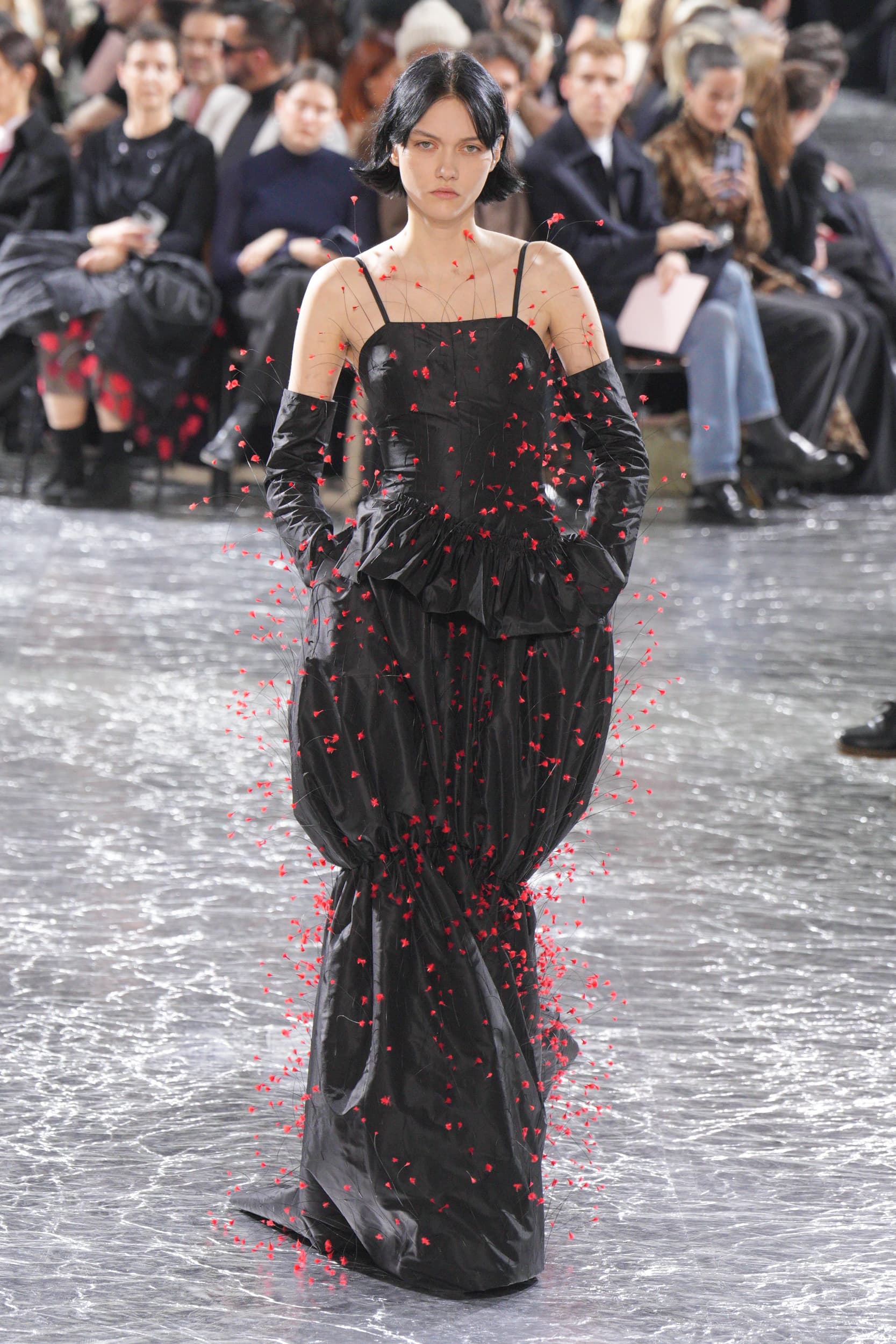
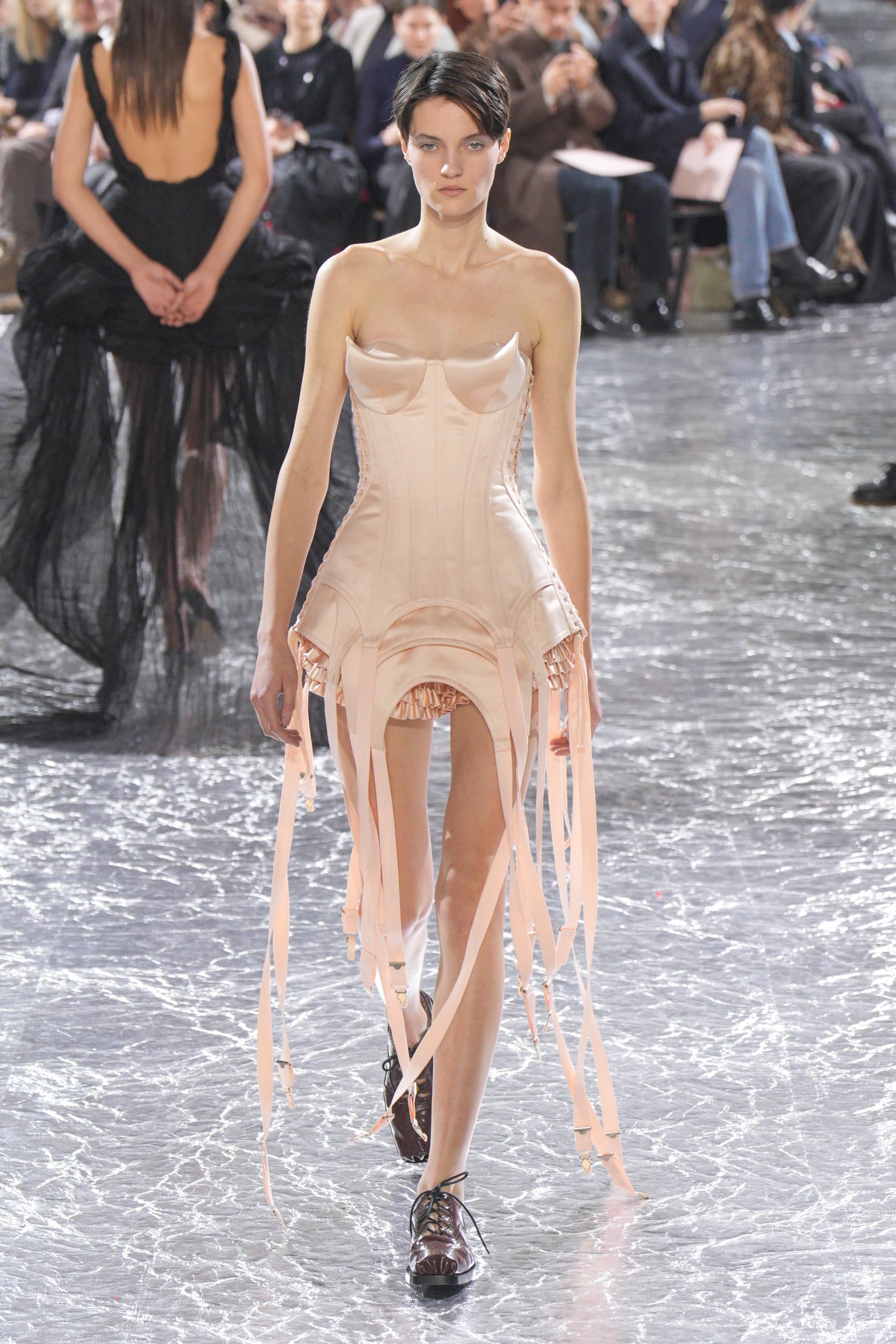


And to underscore the importance of this structural rennaissance, Viktor and Rolf redefined the foundational garment on so many levels – bringing to mind the famous image by Horst P. Horst, Mainbocher Corset, photographed in 1939 and published in American Vogue – a black and white image of a model wearing a corset laced up the back. The duo-colored black and peach/nude collection added weight to this sculpted definition in favor of a slim waist and controlled hourglass figure. For Viktor and Rolf, whether a full ball gown or coat, all bore some semblance of a delicate hourglass silhouette created through the couture details of the undercorset. Their skill in deconstructing and reconstructing fashion norms through the ability to create delicate hourglass silhouettes with couture details, even in voluminous garments, is a testament to their mastery in tailoring and design.
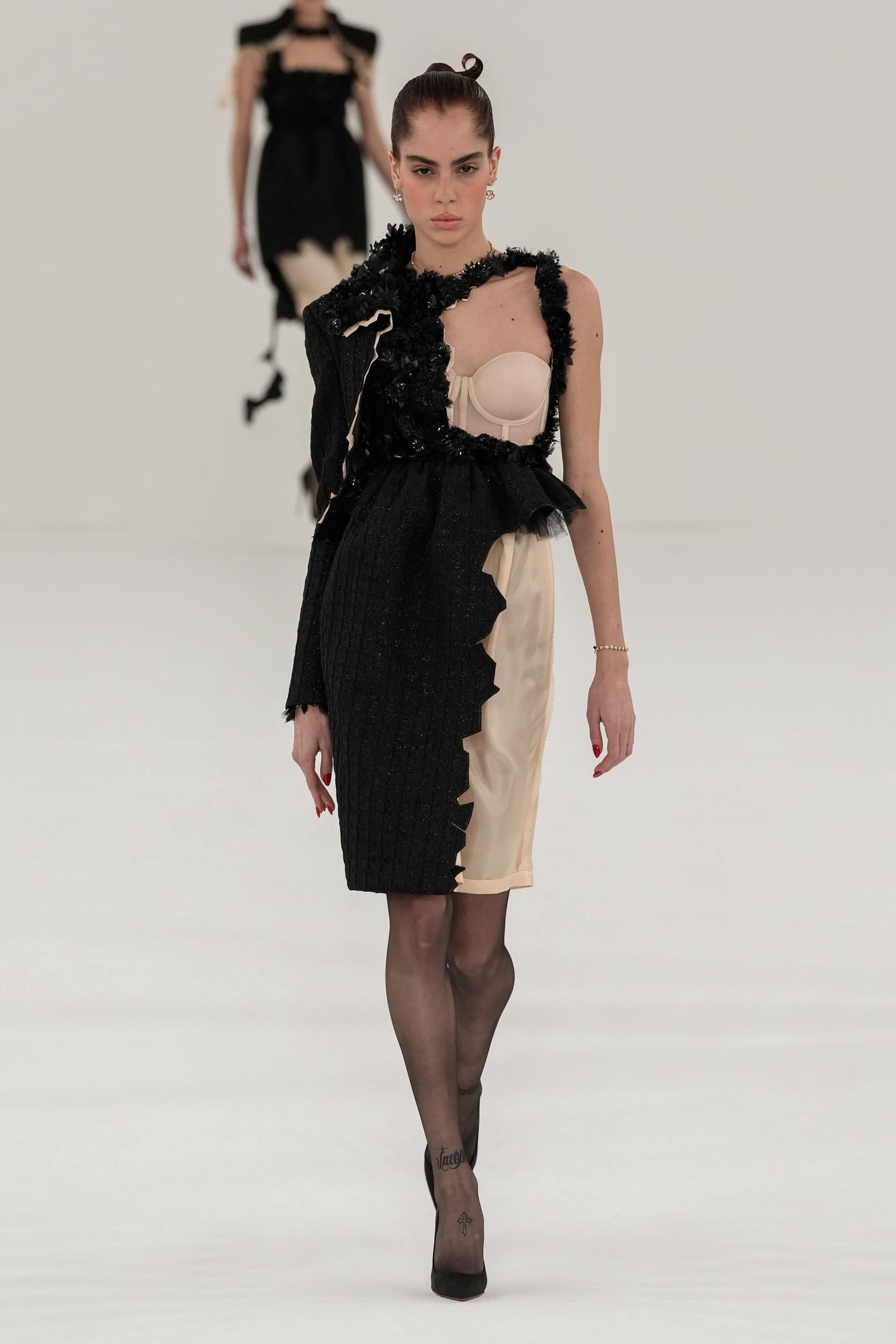




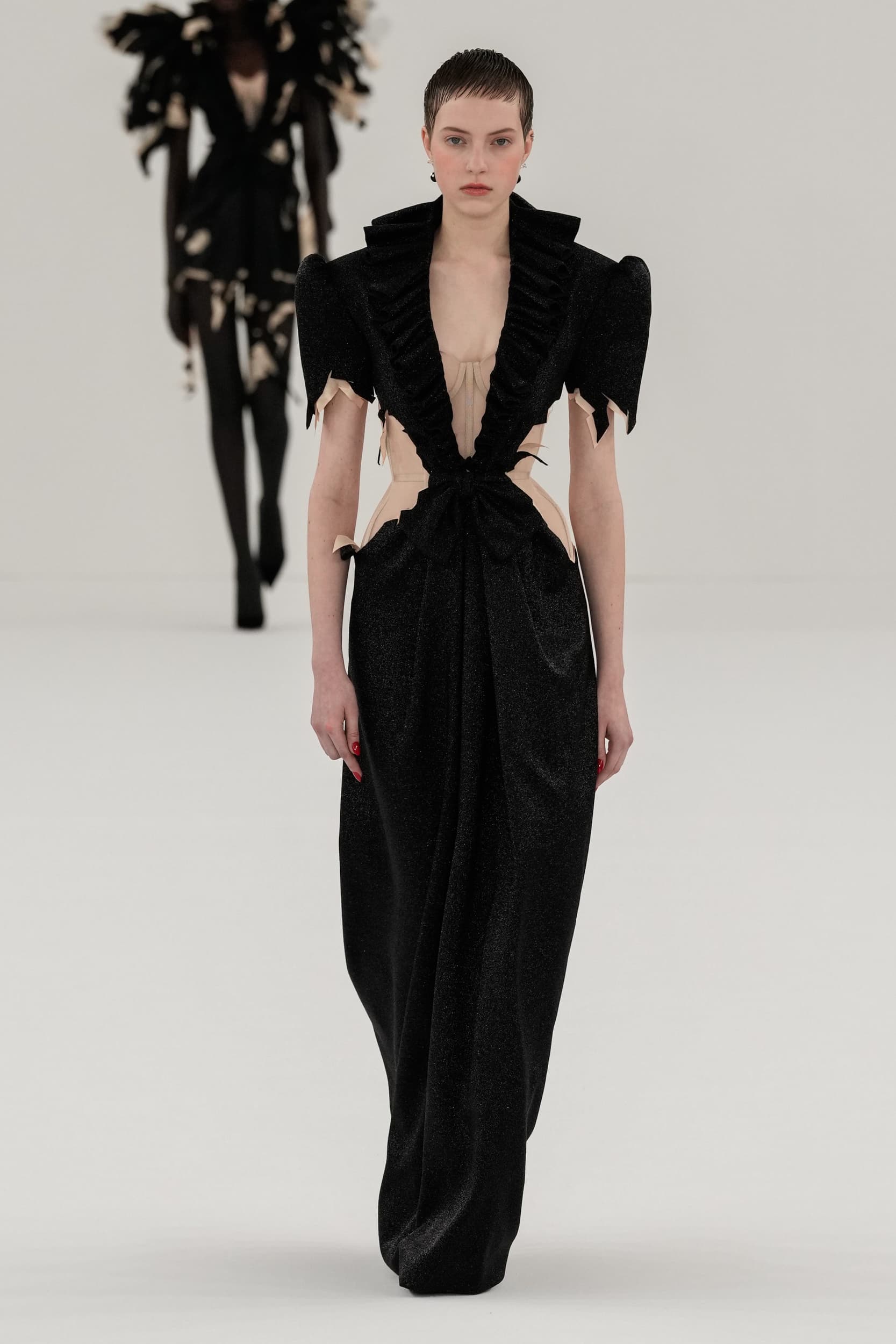
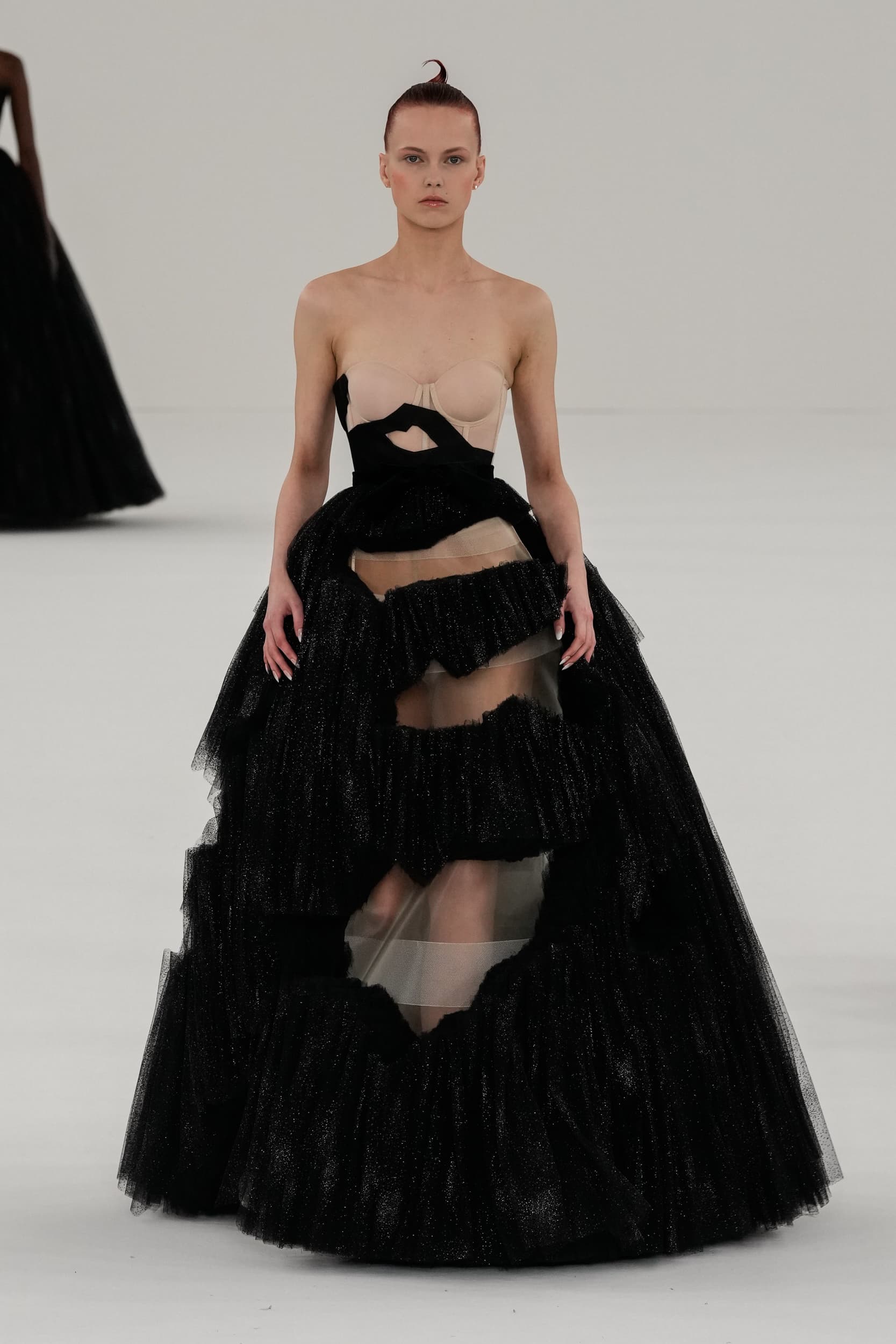
Stephane Rolland and Robert Wun also manifested their take on redefining the new sculpturing – Gaurav Gupta with a bold golden body plate or the striking deep red corsetry from which billowed the most intricate gowns. At the same time, Stephane artisanally crafted wide cumberbands secured with intricate lacing.

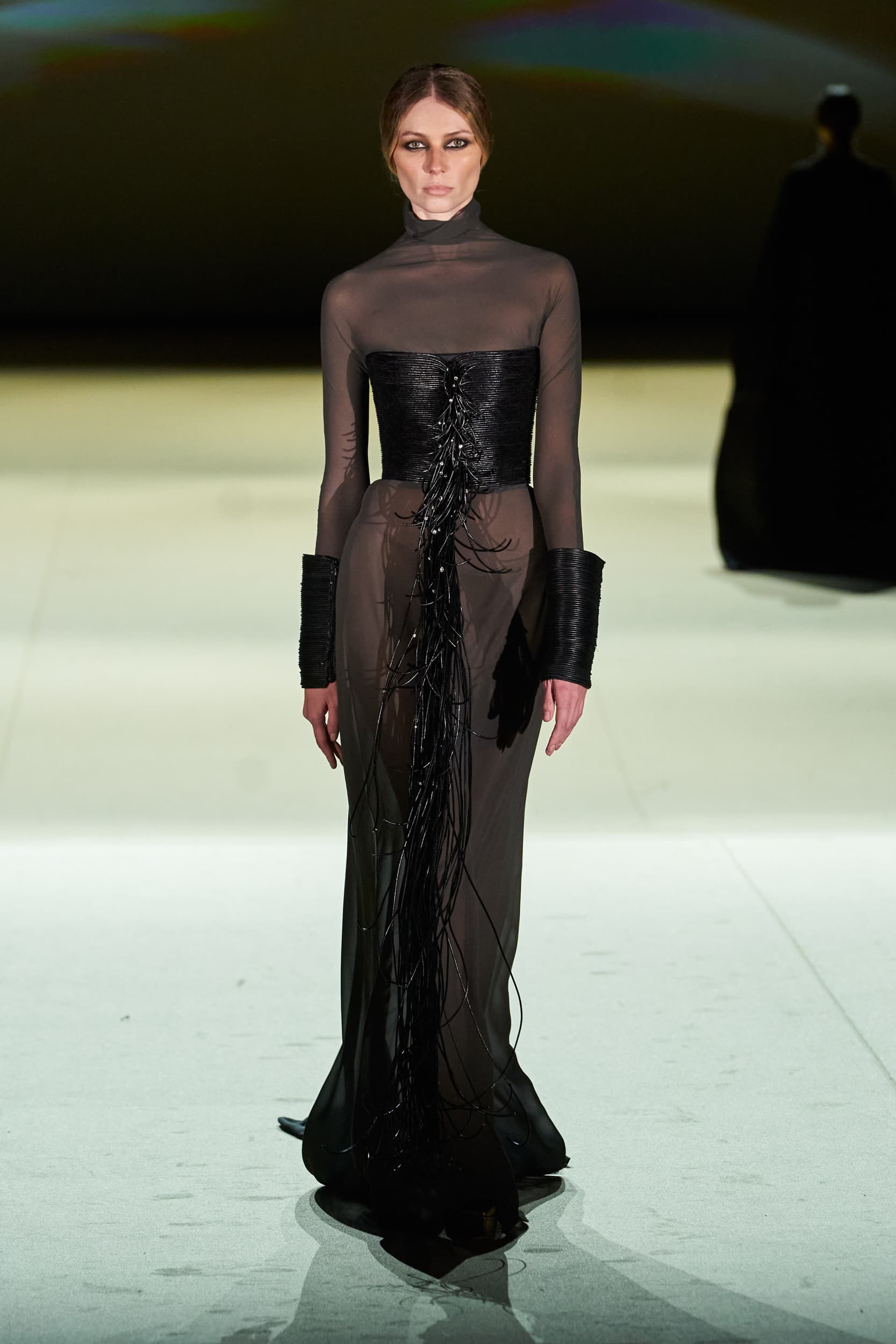

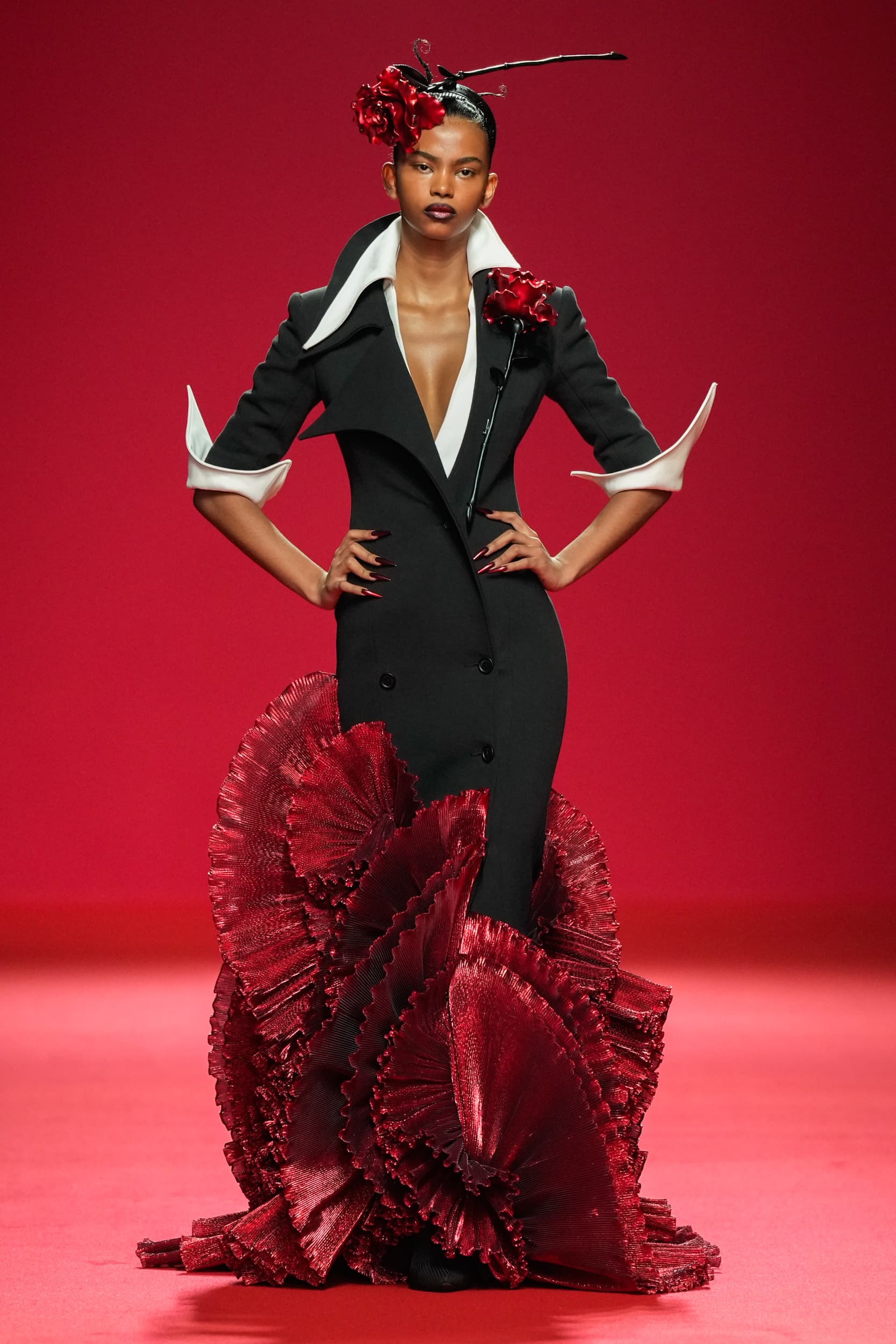
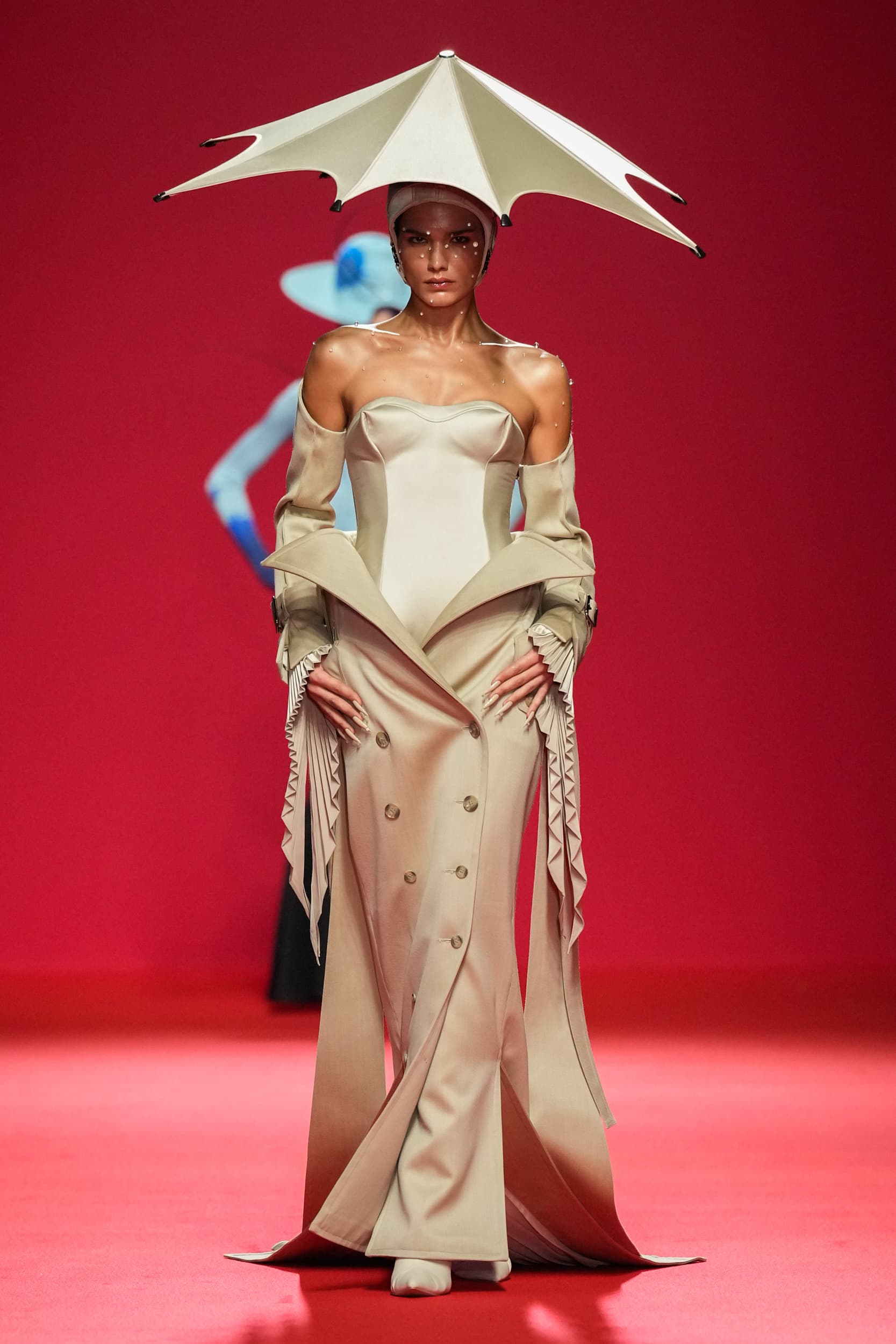
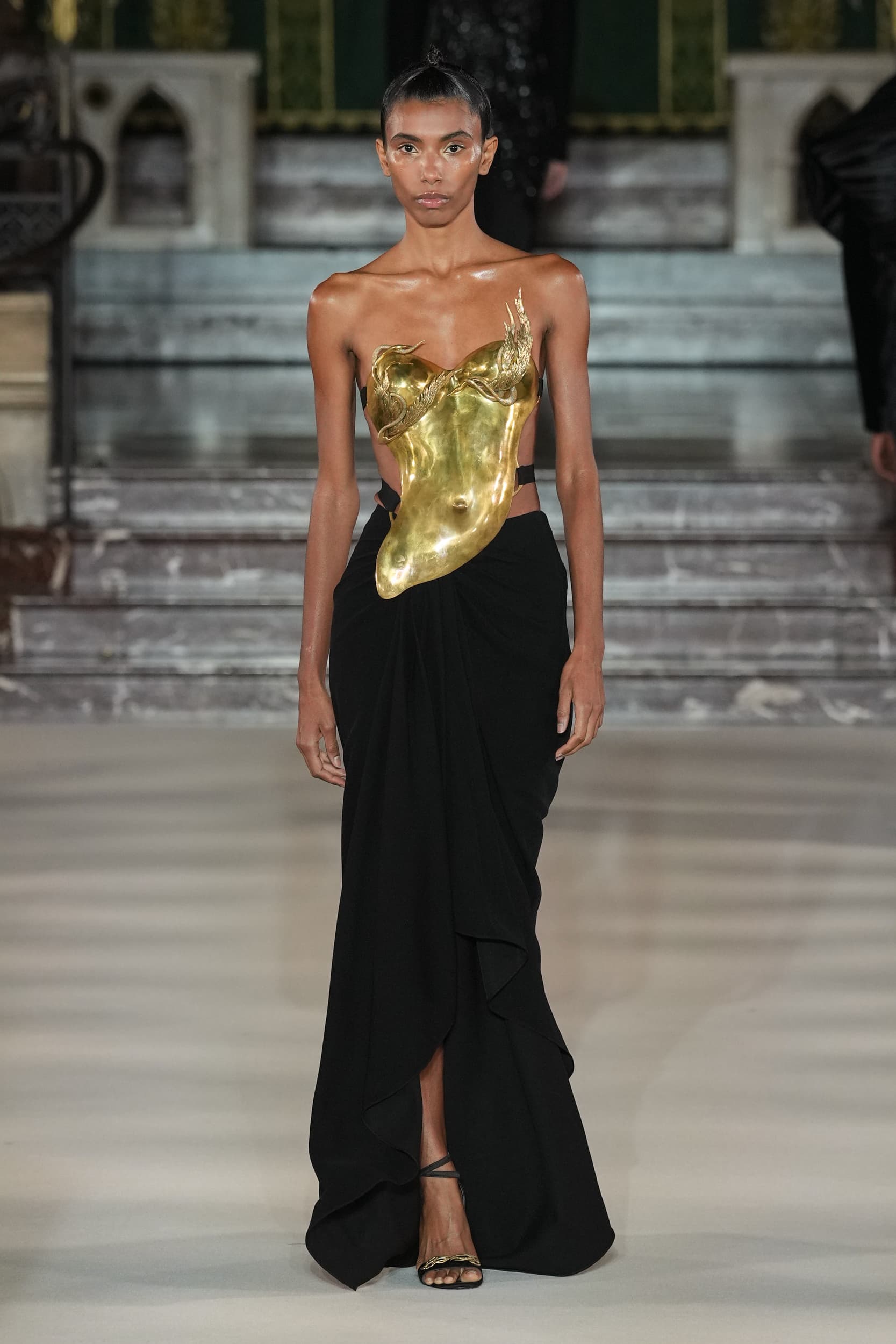

The current haute couture landscape is a fascinating study in contrasts. From Galliano’s theatricality to Roseberry’s surrealism, Armani’s elegance, Viktor, Rolf’s masterful deconstruction, and Simone Rocha’s sensual spirit, every designer offered a unique perspective on how the waist can be celebrated and redefined, each piece a testament to the art of couture itself. “Couture contours” represent a blend of historical elegance, craftsmanship, and artistic expression, exploring the boundaries of fashion and art while signifying a shift towards more sculptural, form-defining designs that pay homage to traditional tailoring techniques, drawing attention to the designer’s skill in molding and sculpting fabric to enhance or redefine the body’s natural contours.

